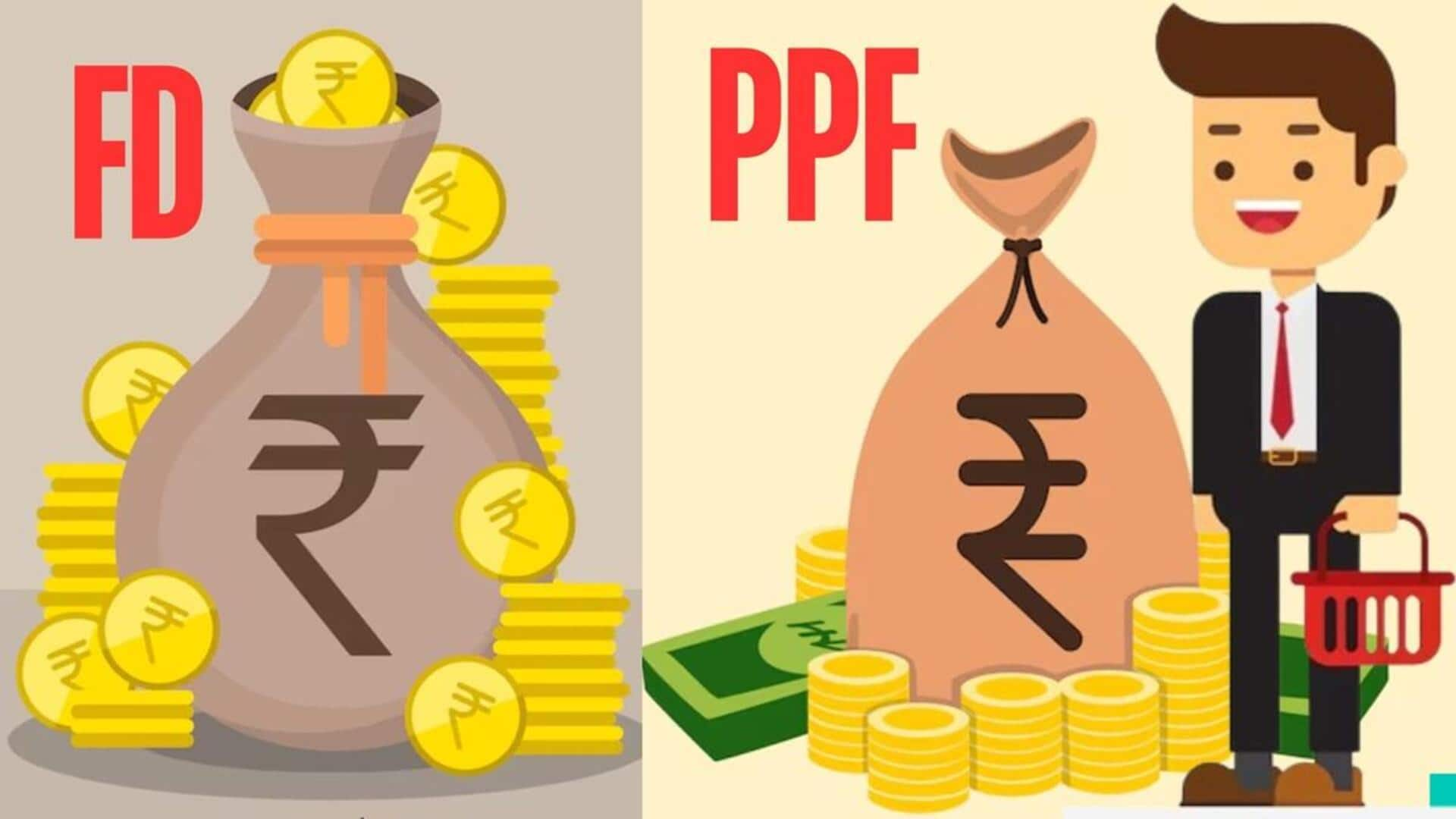
PPF v/s FD: Which is better for homemakers?
What's the story
Public Provident Fund (PPF) and Fixed Deposits (FDs) are two of the most popular investment options in India. They are both favored for their safety and guaranteed returns. But, both of them also have different features that can cater to different financial goals. For homemakers looking to grow their savings, knowing the difference between PPF and FDs can help make informed decisions.
#1
Understanding PPF: Long-term benefits
PPF is a long-term investment option with a tenure of 15 years. It provides attractive interest rates (currently around 7.1% per annum, compounded annually). The minimum annual contribution is ₹500, making it accessible to many. PPF also offers tax benefits under Section 80C of the Income Tax Act, which can help reduce taxable income. However, premature withdrawals are limited, ensuring funds remain invested for long-term growth.
#2
Fixed deposits: Short-term flexibility
Fixed Deposits allow you to invest for short- to medium-term periods, ranging from seven days to ten years. The interest rates for FDs are usually higher than savings accounts but lower than PPF rates (currently between 5% and 7% per annum). There is no minimum investment requirement, making FDs flexible for those who want to invest smaller amounts over shorter periods. However, unlike PPF, FDs do not offer tax benefits.
#3
Risk factors in investments
Both PPF and FDs are considered low-risk investment options as they guarantee returns on maturity. However, inflation can impact real returns on FDs more than on PPFs because of the latter's compounding interest structure over time. While PPF protects against market volatility by locking in rates for long periods, FDs may require you to reinvest at potentially lower rates after maturity.
Tip 1
Liquidity considerations in choices
Liquidity is an important factor when choosing between PPF and FDs. Since PPF has a lock-in period of 15 years with limited withdrawal options before maturity, it is not as liquid as FDs. FDs allow partial withdrawals or premature closure, subject to penalties in some cases. For those needing access to funds sooner, FDs may be a better option.